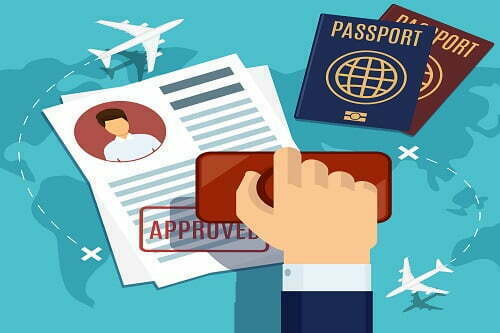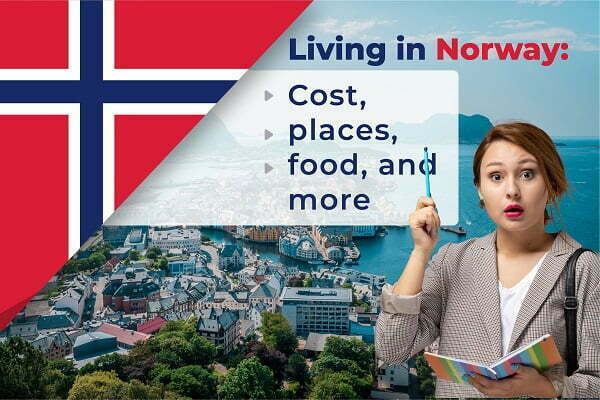Table of Contents
Norway living cost for international students
Norway is home to some of the prestigious educational institutions and universities. Therefore, this place is among the most popular study abroad destinations among students. But, it’s necessary to consider various things before making a decision, including the cost of living in Norway, the best places to live in Norway, etc.
Norway’s allure is heightened by the absence of tuition costs in public schools, regardless of where you come from or what you study. Therefore, it’s a win-win! Without paying any tuition, you may receive a world-class education.
Apart from good education, Norway is a naturalist’s dream, with woods, mountains, and, of course, fjords. So, read ahead to learn about living in Norway, education, student visa, etc.
Education in Norway
Norway is renowned for its high-quality higher education system. This country follows the Bologna Process. This implies that the country’s higher education system is divided into three tiers. These include-
- 1st Tier: This tier implies the first year in university. Bachelor’s degrees are usually completed in three or four years. Specialized topics, such as medicine and engineering, usually require an additional year.
- 2nd Tier: This is the level of study after completing a bachelor’s degree. Master’s degrees are usually completed in two years. However, some credentials, such as teaching certifications, can be completed in as little as a year.
- 3rd Tier: This is the Ph.D. level of education. PhDs are typically completed in three to five years. Some students choose to teach while conducting research, bringing their Ph.D. degrees to the five-year threshold.
Student visas & permits

To begin the application process for a Norwegian student visa, you need to submit the following documents to the Norwegian embassy or consulate in your location-
- It is mandatory for you to show that you have a minimum annual income of 26,357 NOK (US$15,100).
- A lease agreement.
- A proof of your intent to return to your home country after completing your studies.
- A letter from NOKUT confirming your school’s registration.
- Application fee of 4,900 NOK (US$580).
With your student visa, you can work up to twenty hours per week during the school year and full-time during the summer. Norway is also a part of the Schengen Area, which is a free-trade zone with no border restrictions. This means you are free to go to any other country in the area.
Housing & living costs in Norway
When it comes to knowing the cost of living in Norway, housing costs are essential to consider. The cost of the fees reflects the standard of living of major cities like the capital city Oslo.
Average living expenses in Norway (in NOK and USD)
| Monthly rent (1 bedroom apartment) | 13,100 NOK ($1550) |
| Utilities (monthly average) | 1,200 NOK ($140) |
| Monthly public transport pass | 770 NOK ($90) |
| Meal (inexpensive restaurant) | 180 NOK ($20) |
| Coffee | 40 NOK ($4.80) |
| Milk (1 liter) | 18 NOK ($2.10) |
| Vegetables (1kg) | 20 NOK ($2.40) |
| Eggs (dozen) | 35 NOK ($4.20) |
| Water (1.5 liter) | 20 NOK ($2.40) |
| Chicken (1kg) | 130 NOK ($15.60) |
| Wine (bottle) | 150 NOK ($18) |
| Bread (loaf) | 30 NOK ($3.60) |
Tuition fees & scholarships in Norway

There are no tuition costs in Norway. You won’t have to pay a single Krone in tuition fees, regardless of where you’re from or what you’re studying. However, it only applies to public schools that receive state money.
On the other hand, private schools have complete autonomy over their fees. Undergraduate degrees can be obtained for as little as 86,000 NOK (US $9,500), while postgraduate studies can cost as much as 103,000 NOK (US $11,300).
In Norway, doctoral programs are frequently classified as employment, implying that you will be paid while conducting research and teaching.
In terms of scholarships, Norway has a lot to offer. Here’s a list of scholarship programs in Norway for you to study on a budget-
- American Scandinavian Foundation
- Exchange Iceland-Norway
- Fulbright- Grants for US students and Scholars
- Government of Canada International Scholarship Programs
- Lakselaget Foundation Scholarship
- Mobility grants for Norwegian Language, Literature and Culture
- Nordic Research Opportunity Norway-America Association
- Nordplus student exchange
- Norwegian-Chinese Government Scholarship
- Norwegian-Russian Scholarship
- Sons of Norway
- The Anglo-Norse Society – scholarships & grants
- The Erasmus+ grant
Top universities in Norway
Besides researching the cost of living in Norway, you should also learn about some of the best universities there. So, here are the top universities in Norway you can aim for-
- University of Oslo
- University of Bergen
- UiT the Arctic University of Norway
- Norwegian University of Science and Technology (NTNU)
- University of Stavanger
- Norwegian University of Life Sciences (NMBU)
Language & culture
Norway’s official languages are Norwegian and Sami. But, most international students choose to learn Bokml since it is the most widely spoken dialect.
Talking about the weather, Norway’s winters may be harsh, with plenty of rain, snow, and ice. So, a decent set of snow boots, a quality umbrella, and a snug winter coat are all great expenditures.
Not to forget, Norway is a beautiful country filled with jagged cliffs, towering mountains, and brilliant blue waters of Norway’s fjords.
Best places to live in Norway
Last but not least, we have a list of some best places to live in Norway. These include-
- Oslo
- Arendal
- Bergen
- Trondheim
- Stavanger
- Alesund
- Fredrikstad
Key takeaways
- The average monthly cost of living in Oslo is around 10,700 NOK ($1280). This does not include the cost of the rent as it is treated as a distinct expenditure in Norway, like many other nations.
- Rent in Norway is not cheap. Therefore, many Norwegian and international students choose to live in corridors for this reason. These are similar to dormitories in the United States.
- In Norway, cards are used by the majority of the public to carry out transactions. In truth, certain establishments, particularly in urban areas, do not accept cash. Contactless and chip-and-pin payments are the standards.
- As the cost of living in Norway is high, many students prefer to work part-time while studying.
- Although English is spoken in Norway, getting a job outside of Oslo and Bergen would be difficult without some understanding of the language.
- In terms of healthcare, Norway has an excellent system. Its healthcare is universal and at the point of access. Most importantly, it is free of cost. For the most part, your residency permit gives you access to healthcare. Besides, medical centers may be found all around the nation, especially in more remote places.
We hope you’ve got some idea about the cost of living in Norway through this blog. Now, you can make a well-informed decision. If you are still stuck on choosing the right country/university for you, we can help. You just need to reach out to us or drop a comment below.
Liked this blog? Read next: Pre-Departure Checklist | Best guide for a smooth transition
FAQs
Q1. Is living in Norway expensive for a student?
Answer- For most costs, a student’s average budget in Norway is around NOK 12,352 per month (2021). According to the Norwegian Directorate of Immigration (UDI), you’ll require about NOK 123,519 every year (2021).
Q2. Is it easy to get a job in Norway for overseas students?
Answer- It’s no secret that immigrants have a difficult time obtaining jobs in Norway. Due to language problems, tax office ambiguities, and visa/residence permit constraints, applying for a job may be challenging.
Q3. In Norway, how much do students earn?
Answer- According to the Universum poll, Norwegian students have the second-highest pay expectations. Undergraduates in Norway may expect to earn an average of $6,556 each month, or $78,672 per year before taxes, commissions, and incentives.






